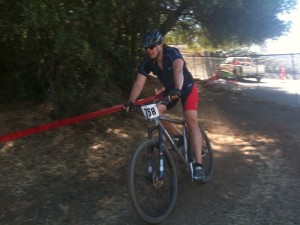
Your body contacts the bicycle in three areas; your hands, your seat, and your feet. The relative positions of feet, seat and hands determine your comfort and efficiency on the bike. There are several variables that determine these positions; crank length, distance from crank center or bottom bracket to saddle, saddle angle, seat tube angle and saddle offset, distance from saddle to handlebar, relative height of saddle and handlebar width, and handlebar drop on road style handlebars. When these measurements are not taken seriously into consideration, pain and fatigue is inevitable during the ride.
Lumbar and Cervical spine pain is experienced very frequently by cyclists, and it can have numerous different causes. The most common cause of any type of biking ache is owing to an improper bike fit. After having your bike professionally fit which can be completed at professional bike shops and some chiropractic offices, use the following guidelines to create any essential adjustments:
1.Moving your saddle backwards could aid to reduce lumbar spine and knee pain but might increase neck and shoulder tension.
2.Handlebar height reduction could improve lower back and hamstring muscle stress nevertheless may trigger increased neck and shoulder stress, and hand numbness.
3.When the saddle is set too high, cyclist becomes unstable and the hips might rock slightly from side to side, placing a strain on the muscles that stabilize rider’s lower back. A leg length difference could produce a comparable kind of dilemma, which can be detected during a chiropractic exam.
Another cause of lower back pain is the tension placed on your spinal discs, joints, and muscles because of the continuous forward Position of cyclist. To neutralize these postural stressors, appropriate stretching prior, throughout, and following riding is very important. Standing up during prolonged riding, as well as alternately bending forward and arching backwards, will help to relieve lower back stress. Tilting your head from side to side will aid to stretch out your neck muscles while riding, but keep your eyes on the road at all times!
The 3rd major cause of neck and lower back pain in cycling is due to the “Multiple Micro Whiplash” syndrome trigerred by the ROAD SHOCK of the constant jarring forces experienced during riding. The following recommendations will assist to reduce these potentially injurious forces:
•Increase your cycling work out slowly to appropriately condition your body.
•Use a wider tire with less of inflation to decrease road shock.
•Change your hand positions regularly and unlock your elbows.
•Use padded gloves and a light helmet.
Question: Was this review helpful?